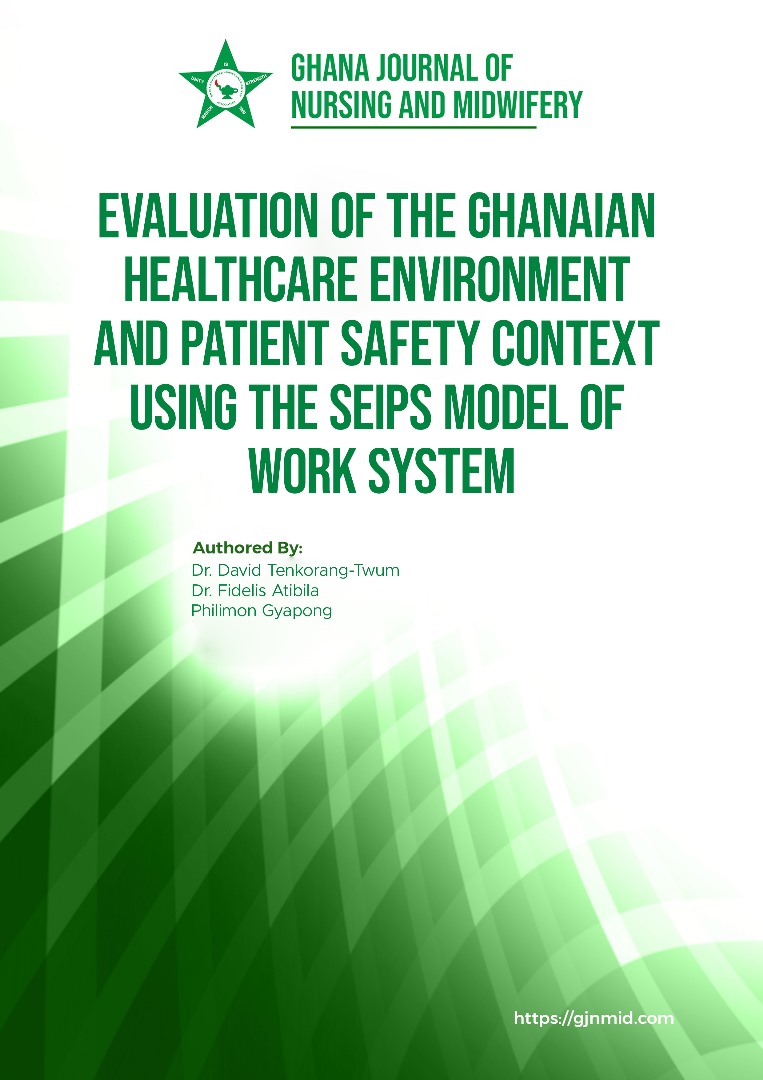Evaluation of the Ghanaian Healthcare Environment and Patient Safety context using the SEIPS model of Work System
Main Article Content
Abstract
Objective:
This paper aimed to evaluate hazards contributing to patient safety incidents within Ghana’s healthcare system using a human factors engineering model to trace risks across interacting domains.
Methods:
The Systems Engineering Initiative for Patient Safety (SEIPS) model framed analysis of challenges within the dimensions of healthcare Personnel, Tasks, Tools/Technology, Environment, Organization and Processes. Over 25 studies provided multi-dimensional empirical evidence, with insights synthesized across domains to depict risk pathways enabling patient harm events.
Conclusions:
The analysis reveals a severely overburdened and constrained healthcare ecosystem unable to reliably deliver safe care processes – with risks stemming from financing limitations, infrastructure deficits, equipment failures, health worker shortages and skills gaps, supply variability, leadership prioritization, and information systems. Solutions require coordinated commitment across these interdependent aspects.
Recommendations:
Six priority actions are proposed spanning governance, culture, staffing, health IT, quality programs and financing – grounded in concrete evidence-based initiatives but connected through systems thinking.
Significance:
This systems analysis substantially advances understanding of patient safety threats in Ghana to motivate action. The model approach further demonstrates application of human factors engineering methods to diagnose healthcare quality challenges in limited-resource settings.
Downloads
Article Details
Copyright (c) 2024
This work is licensed under a Creative Commons Attribution 4.0 International License.






